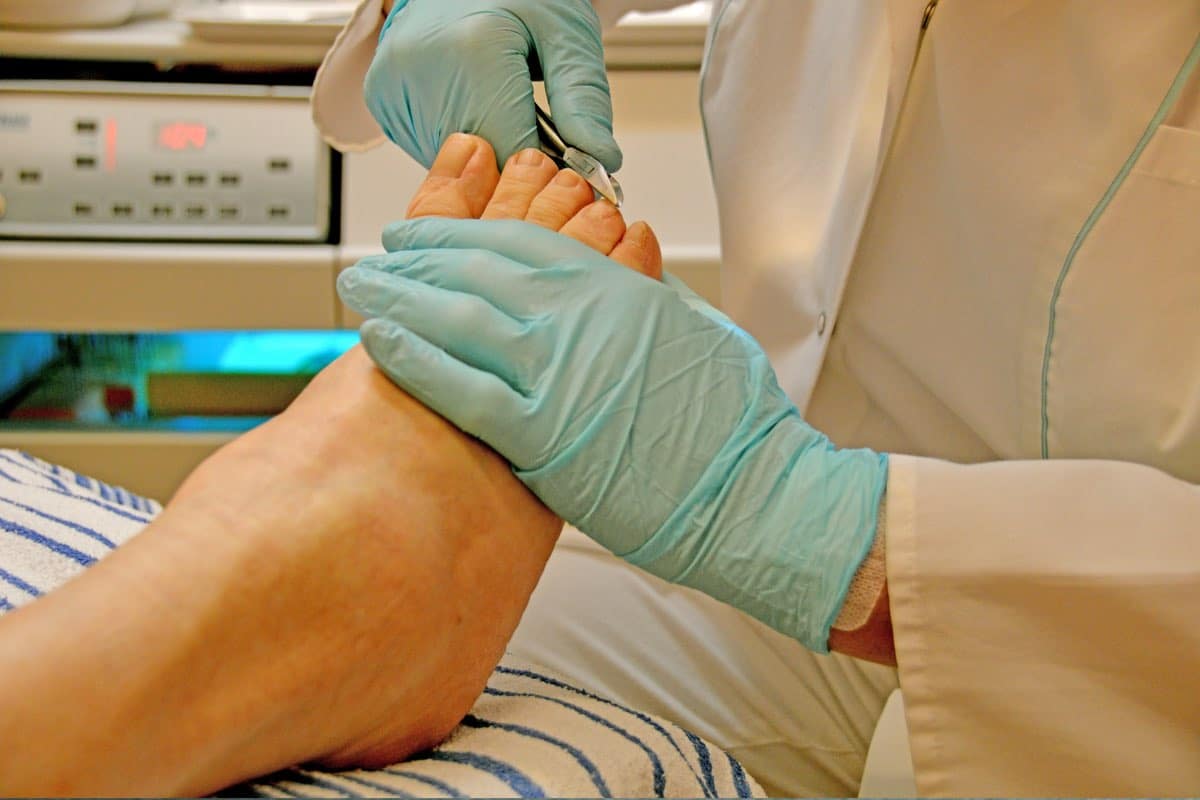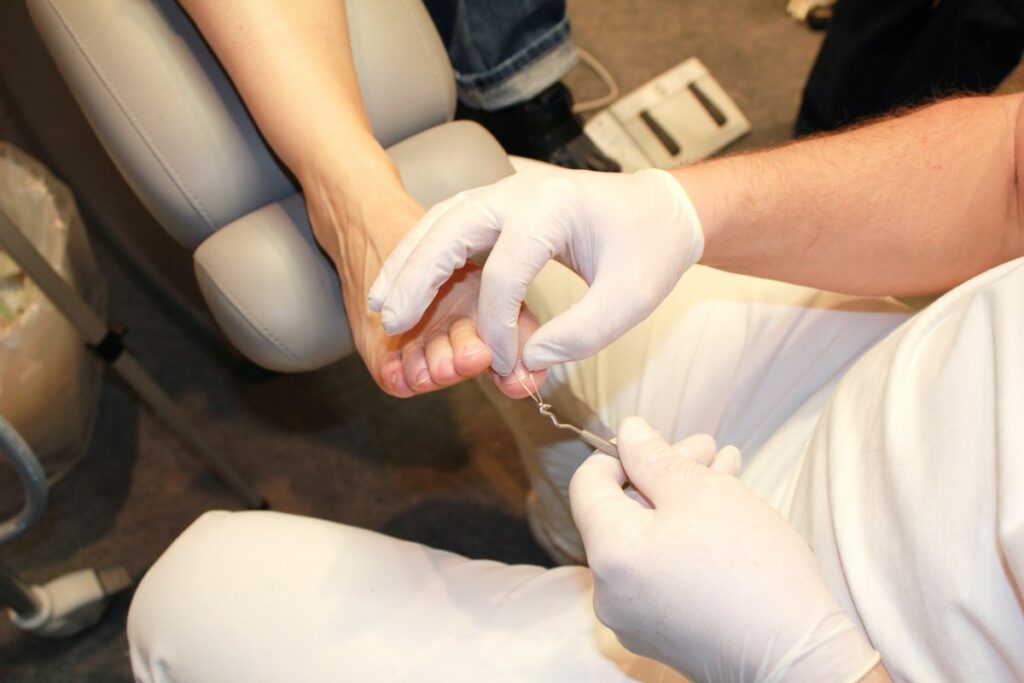Ingrown Toenails: Symptoms, Treatments & Common Questions
The foot is a complicated system made up of 26 bones, 30 joints and more than 100 muscles, ligaments and tendons. With so many anatomical parts, it’s no wonder that the foot is incredibly easy to injure.
One foot condition that is often overlooked but can have a significant impact on your quality of life? Ingrown toenails.

What are ingrown toenails?
Out of all of the foot injuries and conditions our podiatrist sees, one of the most common is ingrown toenails. In fact, there are more than 3 million cases in the United States every year.
An ingrown toenail occurs when the edges or corners of the nail grow into the adjacent skin or when the skin on either (or both) sides of the nail grows over the edge or corner of the nail, causing pain, redness, inflammation and – if left untreated – infection. The big toenail is the most likely to become ingrown, though it can happen to any toe on either foot.
Symptoms
Nearly all ingrown toenails are painful, though the condition typically worsens with time. Ingrown toenails are usually easy to diagnose, as the symptoms are clear to the naked eye and fairly straightforward. Depending on the severity of the condition, a podiatrist may want to take an X-ray to determine how deep the nail has grown into the skin, if the ingrown toenail was caused by an injury or if surgery is needed.
First Stage Mild Ingrown Toenail Symptoms
- Pain when you put pressure on the affected toe
- Tender, red, swollen or hard skin next to the nail
- Toe feels warm to the touch
Late Stage Ingrown Toenail Symptoms (additional to above)
- Excess skin growth around the nail
- Yellowish drainage
Infected Ingrown Toenail Symptoms
- Increased pain
- Bleeding
- Oozing pus
- Extremely red, swollen skin around the toenail
- Overgrowth of skin around the toenail
- Fever
Common Ingrown Toenail Questions
What causes ingrown toenails?
There are a number of reasons why people get ingrown toenails, including:

- Wearing tight-fitting shoes and/or high heels
- Cutting nails too short or letting them grow too long
- Not trimming toenails straight across (vs curved to the shape of the toe)
- Acute injury or trauma
- Repetitive impact from sports and activities (e.g. soccer)
- Fungal infections that result in widened or thickened toenails
- Family history (congenital)
Who gets ingrown toenails?
Ingrown toenails are common in teenagers and people in their 20s and 30s. Men are more likely to get an ingrown toenail than women, and people with a family history of ingrown toenails are likely to get them. People who suffer from diabetes also have a high rate of ingrown toenails.
Will an ingrown toenail heal itself?
Unfortunately, ingrown toenails typically will not go away without treatment. Home treatments are usually successful; however, severely ingrown toenails or infected nails require medical attention.
How do you fix an ingrown toenail?
There are effective home remedies and surgical procedures for ingrown toenails. See below for more information.
When should I see a foot specialist?
If left untreated, an infected ingrown toenail can spread the infection to the bone and cause a serious bone infection. If your ingrown toenail doesn’t improve after three days of home treatment, if you have AIDS or are on chemotherapy, or if you have diabetes or a condition that causes poor circulation and/or poor wound healing, see a podiatrist immediately.
Ingrown Toenail Treatments
Home Remedies
Most ingrown toenails can be treated at home, so long as they are recognized early and treated immediately.
Common home remedies for ingrown toenails include:
- Soaking the entire foot in warm water 3 to 4 times per day
- Keeping the foot clean and dry
- Wearing comfortable shoes or sandals until the ingrown toenail is fully gone
- Taking nonsteroidal anti-inflammatory drugs (NSAIDs) for the pain and inflammation
Ingrown Toenail Removal

If home remedies don’t work, or if your ingrown toenail is severe or infected, you may need surgery. Your foot surgeon may prescribe oral antibiotics before the surgery and the nail may need to be either partially or fully removed. Your foot surgeon may also remove a portion of the nail bed, some of the adjacent skin or part of the overgrowth of skin.
If you require a full nail removal, it may take 3 to 4 months for the nail to grow back, and the toenail may grow back deformed.
Prevention
When it comes to ingrown toenails, prevention is key. For many people, ingrown toenails can be avoided by doing the following.
Keep your toenails trimmed to be even with the tips of your toes. If your nails are too long or too short, the pressure from shoes, ski boots or any other kind of footwear can force your nail to grow into the skin of your toe.
Trim your toenails straight across, not curved to match the shape of your toe. If you get professional pedicures, be sure to tell your pedicurist to trim and file your nails straight across. If you had diabetes or another condition that causes poor circulation in your feet, you should see a podiatrist regularly to get your feet checked and nails trimmed.
Wear shoes that fit you properly and/or protective footwear, if applicable. If you have foot issues or a condition that causes foot ailments, it’s vital to wear properly-fitting shoes or specialty shoes that help your condition. If you’re not susceptible to foot problems, ill-fitting shoes can put pressure on your toes and cause ingrown toenails. If you work in construction or in an industry that puts your feet at risk of injury, wear steel-toed shoes or other protective footwear.
If you’re diabetic, check your feet. If you suffer from diabetes, nerve damage and other common symptoms can mask foot problems. Check your feet for ingrown toenails, infections and other foot issues daily.
If you have any questions for our podiatrist or our orthopedic foot and ankle surgeon about an ingrown toenail or another foot condition, please comment below or contact us.
Leave a Reply